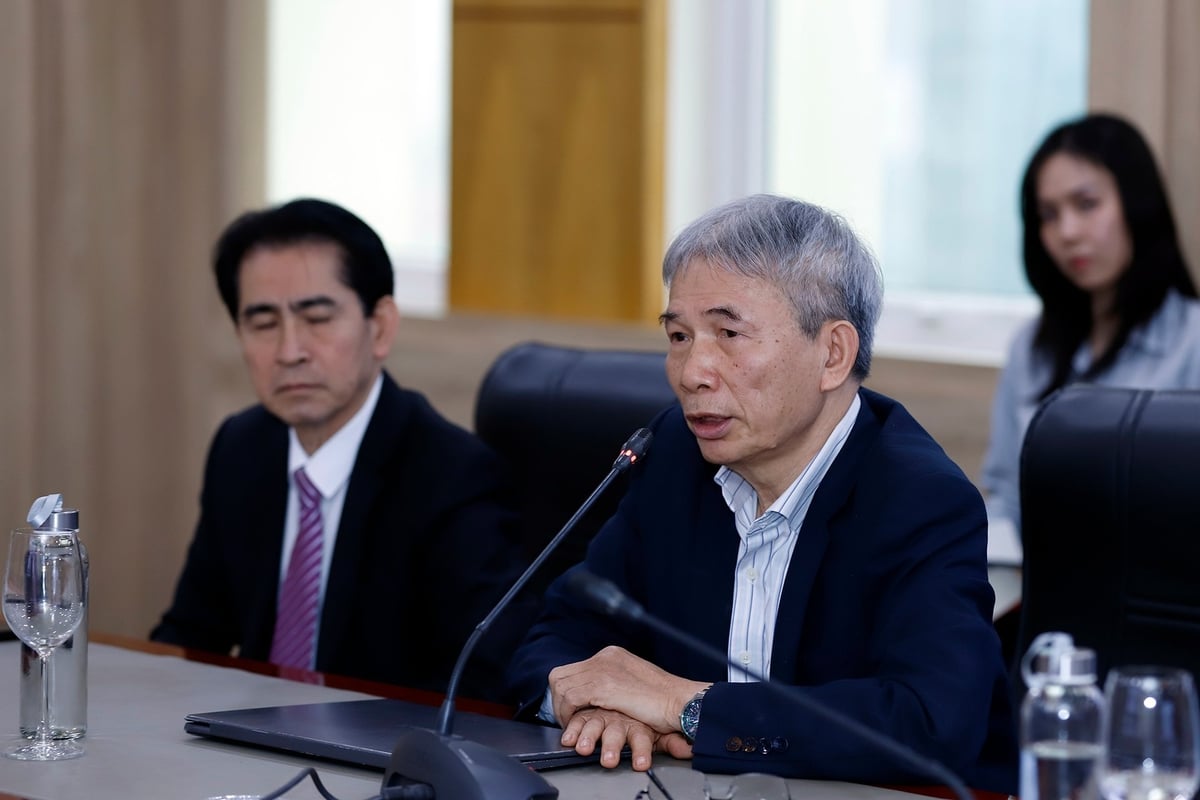November 27, 2025 | 10:05 GMT +7
November 27, 2025 | 10:05 GMT +7
Hotline: 0913.378.918
November 27, 2025 | 10:05 GMT +7
Hotline: 0913.378.918
At the meeting with Minister of Agriculture and Environment Do Duc Duy on the afternoon of April 7, Mr. Ngo Sy Hoai, Vice Chairman and Secretary General of the Vietnam Timber and Forest Products Association, raised the question of why Vietnamese wood products are being exported to the U.S. in such large volumes.
According to Mr. Hoai, out of the country’s total agro-forestry export turnover of around USD 13-14 billion, the wood and forest products sector alone accounts for approximately USD 9.4 billion. At the national level, this is considered a sector with a significant trade surplus.
On the other hand, Vietnam only imports about USD 323 million worth of wood from the US each year, of which up to USD 300 million consists of raw wood materials (such as oak and ash). These materials are used for processing into refined products and then re-exported back to the U.S. Notably, the U.S. is constantly seeking markets for its timber products, and Vietnam is currently the second-largest importer of American wood globally.

Mr. Ngo Sy Hoai, Vice Chairman and Secretary General of the Vietnam Timber and Forest Products Association, spoke at the meeting on the afternoon of April 7. Photo: Khuong Trung.
Mr. Hoai further noted that each year, the U.S. imports about USD 23 - 24 billion worth of wooden furniture, of which Vietnam supplies approximately 38 - 40% of the import value. These are mainly high-quality finished wood products manufactured in Vietnam, where low labor costs provide a competitive advantage.
Explaining the rapid increase in wood exports to the U.S., Mr. Hoai said that since the onset of the U.S. -China trade dispute in 2018, Chinese wood products have been subjected to tariffs ranging from 25% to over 200%. In contrast, Vietnamese wood products have not faced any tariff changes. As a result, this has created a “golden opportunity” for Vietnamese businesses to import raw materials from the US and export high-value processed wood products back to the American market. This trend aligns with the supply chain diversification strategies promoted under both President Trump and President Biden.
Vietnam has now become the second-largest supplier of furniture to the U.S., a breakthrough achievement. This growth, however, has also placed the Vietnamese wood industry under closer scrutiny. Despite multiple investigations from the US, the industry has consistently maintained cooperative technical agreements and demonstrated compliance with legal timber harvesting standards.
Regarding the newly proposed and “shocking” 46% tariff rate, both foreign-invested and domestic enterprises are doing their best to adapt, without currently considering withdrawal from the market, as relocating production to another country is not a simple task.
As for solutions, Mr. Hoan shared that, for the time being, enterprises are remaining calm and placing their trust in the government's negotiation efforts. A particularly positive signal is Vietnam’s decision to waive all import fees on timber shipments from the U.S., which is a clear gesture of goodwill from the country’s top leadership.
In the long term, the association hopes for financial and fiscal support measures similar to those applied during the COVID-19 pandemic, such as debt rescheduling, tax deferrals, and reductions in land lease fees, to help businesses weather the current challenging period.
Looking ahead, Mr. Hoan revealed that China has recently banned imports of US roundwood and sawn timber, an annual trade estimated at around USD 2 billion. Consequently, the US is actively seeking new export markets for these products. The Vietnam Timber and Forest Product Association has proposed that the government consider reviewing current policies to seize this opportunity to expand exports to China - the world’s largest consumer of sawn timber, with an annual market value of up to USD 2 billion. This strategy could help create new demand for US roundwood and sawn timber, thereby contributing to a more balanced bilateral trade relationship.
“In every challenge lies an opportunity,” Mr. Hoai emphasized. He believes the current difficulties could serve as a catalyst to restructure the industry, with a focus on high-value-added product segments such as furniture, an area where Vietnam holds significant competitive advantages.
Ministry of Agriculture and Environment affirmed that the government will always stand by and seek long-term, sustainable solutions for Vietnam's agricultural sector. In this effort, the state, businesses, associations, and farmers must work closely together, hand in hand to restructure, upgrade the value chain, and move towards a modern, more resilient agricultural sector.
Translated by Kieu Chi

(VAN) Le Hoai Trung, Member of the Communist Party of Vietnam Central Committee and Minister of Foreign Affairs, held talks with Vi Thao, Chairman of the Guangxi Zhuang Autonomous Region (China) this week.

(VAN) The Mekong River Commission adopts the 2026 - 2030 Strategic Plan with a people-centered approach.
/2025/11/26/1720-1-200855_132.jpg)
(VAN) Viet Nam and Japan have many conditions to expand cooperation on climate change adaptation, particularly in disaster risk management based on advanced technologies.

(VAN) The strong development of digital technology and artificial intelligence is opening up opportunities to transform science and technology into a 'Magic eye' for disaster forecasting and early warning.

Applying vaccines and proactive disease prevention helps pig herds stay healthy, maintain productivity, reduce risks, and decrease reliance on antibiotics in modern livestock farming.

(VAN) Many advanced agricultural technologies and products were shared at the Viet Nam - South Korea Agricultural Technology Introduction, Trade Promotion, and Connection Seminar 2025.

(VAN) Minister Tran Duc Thang hopes to strengthen connections and exchanges with China in agriculture and environment sector through the Embassy of Vietnam in Beijing.